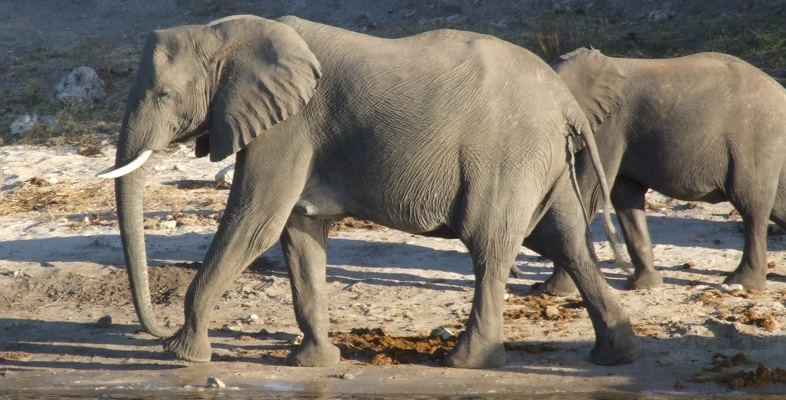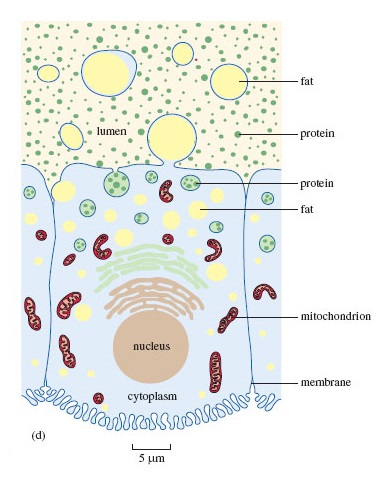5.1 Fat content of milk
Fat is another key constituent of milk. The fat content of milk can vary over time, and the variation in milk composition between species is even greater. For example, rhinoceros milk contains hardly any fat, while seal milk is almost 50% fat. In those species where milk production has been most thoroughly investigated, secretory cells in the mammary glands take up fats from the bloodstream. (They also synthesise fats from other nutrient molecules carried to them in the blood, such as sugars.) The basic constituents of milk fats are then assembled together, most of them in parallel stacks of folded membranes of the type shown in Figure 17 (d). Fat accumulates within the droplets evident in (d), in the process of migrating to the upper part of the cell. The fat droplet, itself wrapped in a membrane, merges with the cell membrane and is ‘budded-off’ – fat droplet plus its enveloping membrane – into the lumen.

